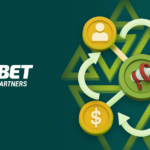Top 5 Landing Page Mistakes Affiliate Marketers Make (and How to Fix Them)
10.06.2025
Top 5 Landing Page Mistakes Affiliate Marketers Make (and How to Fix Them)
10.06.2025A landing page is the central point of user interaction with an offer in affiliate marketing. It is here that the most important moment happens – the conversion of traffic into targeted actions. However, numerous affiliates continue to lose potential results due to recurring mistakes that can be corrected with simple steps. In this section, we will analyze five of the most common mistakes on landing pages and explain how to avoid losses.
In the field of affiliate marketing, a landing page is the first and often the only opportunity to convince a visitor to perform a targeted action. However, even with competent traffic and an attractive offer, the page may not work if key mistakes are made in its structure or presentation. This is not only a loss of potential users, but also a deterioration in ROI and the overall impression of your website.
Most often, the problems are related to basic things: a poorly worded headline, too much text, a lack of a clear call-to-action button, or – even worse – technical bugs. A poorly optimized landing page doesn’t just fail to fulfill its function – it damages the reputation of your affiliate business.
Advertising campaigns that you have invested in may not yield results if the page does not “work” for marketing purposes. Remember: traffic is only half the battle. The rest depends on what the user sees after the click. Therefore, landing optimization is a critical step that should not be ignored.
Landing page mistakes: why even good advertising doesn’t work
Many affiliate marketers spend considerable budgets on promotion, but do not see the expected results. The reason is often not traffic or the quality of the offer, but basic mistakes on the landing page. A landing page is not just a business card, but a mechanism that either converts or loses users. Below are the key mistakes that quietly kill conversions, even when everything else is done correctly.
Typical failures:
- • Lack of adaptation for mobile devices. If the page looks good only on the desktop, you automatically lose mobile traffic, which is up to 80% of potential visitors.
- • Unclear content structure. When the elements are scattered randomly, without a logical order, the user simply does not understand what is being offered and why it is important right now.
- • Faceless design. Even the best offer can be ignored if the page looks cheap, standard, or template-like. People judge by the “cover” and make decisions instantly.
- • Unnecessary distracting elements. Banners, pop-ups, third-party links – all of these distract attention from the main goal. Landing pages should lead the user to a single, clear action.
The page should exactly match the user’s expectations that were formed after clicking on the ad. If the promise is “fast registration with a 200% bonus,” this should be the first thing the user sees. Matching promises and content is the key to trust and action.
Landing page optimization mistakes: what slows down conversion
Landing page optimization is not a one-time task but an ongoing process. Many affiliate marketers neglect this stage or optimize only the appearance, leaving out the functional aspects. This is where the mistakes that prevent the page from working to its full potential are hidden.
Frequent optimization mistakes:
- • Slow page loading. Even an additional 2–3 seconds can reduce conversion by 30-50%. This is especially critical for mobile traffic.
- • Invisible or unclear forms. If the registration form looks inconspicuous, does not explain why it is needed, or requires too much data, users ignore it.
- •Ignoring behavioral analytics. Without analyzing clicks, heatmaps, and scroll depth, it’s hard to understand what prevents a user from completing an action.
Optimization is about constantly testing hypotheses, analyzing results, and adapting to the behavior of real users. If you don’t test, measure, and improve, the page will quickly become obsolete, even if it worked yesterday. And in a highly competitive environment, every loss is a bonus for competitors.
Affiliate landing page: mistakes in the positioning of the offer
Even the most perfectly designed landing page will not be effective if the offer itself is not presented correctly. In affiliate marketing, the page should not just inform, but convince the user to take a specific action – register, follow a link, use a bonus. Positioning mistakes can reduce conversion by several times, even if the traffic is of high quality.
Typical mistakes in positioning:
- 1. Unclear target action. If the user does not understand what exactly he needs to do, he will not do anything. Links, buttons, explanations – everything should lead to one clear call to action.
- 2. Overload of information. When a page simultaneously talks about a bonus, registration, affiliate terms, game review, and several other topics, the user gets lost. The page should have one goal.
- 3. A bonus without a clear value. Phrases such as “Get more” or “Special offer” work worse than a specific one: “Get 50 free spins after registration”. People respond to specifics.
- 4. Lack of trust building. If there are no trust elements on the page (partner logos, reviews, guarantees, certificates), users are more likely to hesitate.
- 5. The same approach for all traffic sources. Traffic from TikTok and Google Ads requires a different tone of communication. The page should take into account where the user came from and adapt to this context.
Good positioning is not only about what you offer, but also how you present it. It is the presentation that often decides whether a user will become a player or just close the tab. When working with an affiliate landing page, it is important to understand not only the function of the page, but also the emotion it evokes.
Landing page for affiliate marketing: how to make it effective
The landing page in affiliate marketing is not just a “showcase” but a key element that decides the fate of the entire advertising campaign. It determines whether a visitor will turn into a user and traffic into revenue. Creating an effective landing page is a combination of design, content, psychology, and audience behavior analysis.
Elements that increase the effectiveness of an affiliate page:
- • The first seconds are crucial – the headline should immediately explain the value: “Get up to €100 bonus today” is better than the abstract “Welcome offer”.
- • Visual hierarchy. The page should “lead” the user from interest to action. Large headlines, emphasis on the key, buttons with calls to action, infographics – all this structures the experience.
- • Mobile adaptation. Most traffic today comes from smartphones. If a page does not work on mobile or looks bad, it immediately loses conversion.
- • Simplicity and speed. Minimalism is the key to efficiency. No extra fields, complex forms, or unnecessary transitions. One screen – one action.
- • Maintaining trust. Security badges, logos of well-known partners, media mentions, real reviews – all this works as social proof and reduces barriers to action.
A landing page is not just a part of the advertising funnel, it is the point where a decision is made. The more it speaks the user’s language, shows them the benefits, builds trust, and leads to a logical action, the more likely it is that a click will turn into a result. In the context of affiliate marketing, the right landing page is literally a monetization tool for every visitor.
Affiliate program landing page: how to create an effective page to attract partners
An affiliate acquisition page is a separate type of landing page that should not sell a product to the end user, but the affiliate program itself. This is critical for any business that wants to scale traffic and revenue through external partners. The key here is the correct presentation of benefits, transparency of conditions, and the challenge of trust.
What an affiliate program page should contain:
- • A clear offer: how much you can earn, how quickly partners receive payments, what payment models are available (CPA, RevShare, hybrid, etc.).
- • Simple terms of entry: a brief description of how to join the program, how long it takes to register, and whether there is verification.
- • Examples of successful partners or case studies: short stories, figures, or screenshots of income – anything that builds trust and demonstrates real results.
- • List of available tools: banners, tracking links, APIs, analytics – potential partners want to see what they will work with.
- • Application form or registration button with a bright call-to-action. Without it, even the most convincing text will not work.
It is also important to take into account the type of target audience: newcomers are looking for simplicity and support, while experienced affiliates are looking for favorable conditions, transparency, and technology. That is why adapting messages to the type of user increases efficiency.
A successful affiliate program landing page is not just an information page, but a full-fledged partner acquisition tool that helps to scale your business by means of new traffic sources. It often determines whether a potential partner will want to work with you.
How to create a landing page for affiliate marketing: tips for an effective launch
Creating a landing page for affiliate marketing is more than just an attractive design. It is a clear, structured process that should take into account user behavior, marketing goals, and the specifics of the affiliate offer. This page is the first point of contact between the user and the product or service, so it should work like a flawless conversion machine.
To create an effective affiliate landing page, it is important to:
- 1. Use a catchy headline: it should be short, specific, and immediately answer the user’s request or promise a benefit.
- 2. Optimize the structure of the benefits block: short paragraphs, infographics, icons – all of these help to convey the point quickly and effectively.
- 3. Add social proof: testimonials, brand logos, number of customers – everything that increases the credibility of the product or program.
- 4. Conduct A/B testing: change headlines, button colors, call-to-action wording, and track the results to choose the most effective options.
An affiliate landing page should be responsive (for mobile), load quickly, and not create obstacles on the user’s path. If they spend time searching for the right button or don’t understand what is required of them, you lose traffic.
Affiliate marketing landing page: how to make it a tool for stable profit
An affiliate marketing landing page is a page that should not only inform, but also compel action. Its effectiveness determines whether traffic will turn into revenue. Successful affiliates understand that the same affiliate offer can produce different results depending on the quality of the landing page. And the correct implementation of this page can become a growth point for the entire business.
For the page to bring a stable income, you should consider:
- • Traffic context: adapt the page to where the user comes from – TikTok, Facebook, Google Ads, or push notifications. Each source has its own expectations, content format, and behavioral patterns.
- • Depth of the offer: instead of a dry “Buy now”, show why this offer is beneficial right now. Involve psychological triggers: time constraints, social confirmation, exclusivity.
- • Multipage funnel marketing strategy: instead of one page, you can create several stages – from the first acquaintance to the main action. This allows you to “warm up” the user before the main conversion.
- • Constant testing: the page should “live” and change along with traffic. Use tools for analyzing user behavior – Hotjar, Google Analytics, A/B testing – to make decisions based on data, not assumptions.
- • Built-in trust: the more trustworthy the page is (through design, language, UX, real-life cases), the lower the barrier to action. This is especially critical for monetary transactions or registrations.
An effective affiliate landing page is not a “one-size-fits-all” page. It is a targeted tool customized for a specific audience, traffic source, and goal. It decides whether you will receive income or lose the budget invested in traffic. Therefore, not skimping on testing, details, and personalization is the best investment in results.
Recent posts

How to Negotiate Higher Affiliate Commissions in Finland — Data-Driven Strategies for Win-Win Deals
Negotiating higher commissions with affiliate programs in Finland works best when you use a structured, data-driven approach. The market is competitive, and affiliates who present…

How to Build a Multi-Level Betting Affiliate Network — From Technical Setup to Performance Optimization
To make a big group of friends who sell for you in the casino you need to start well, see how good they do, and…

Top Sports Betting Affiliate Programs in Finland – Complete 2025 Guide
Finland rewards careful planning and clear user paths. Hockey and football spikes shape weekly intent across search and social. In this context, sports betting affiliate…

